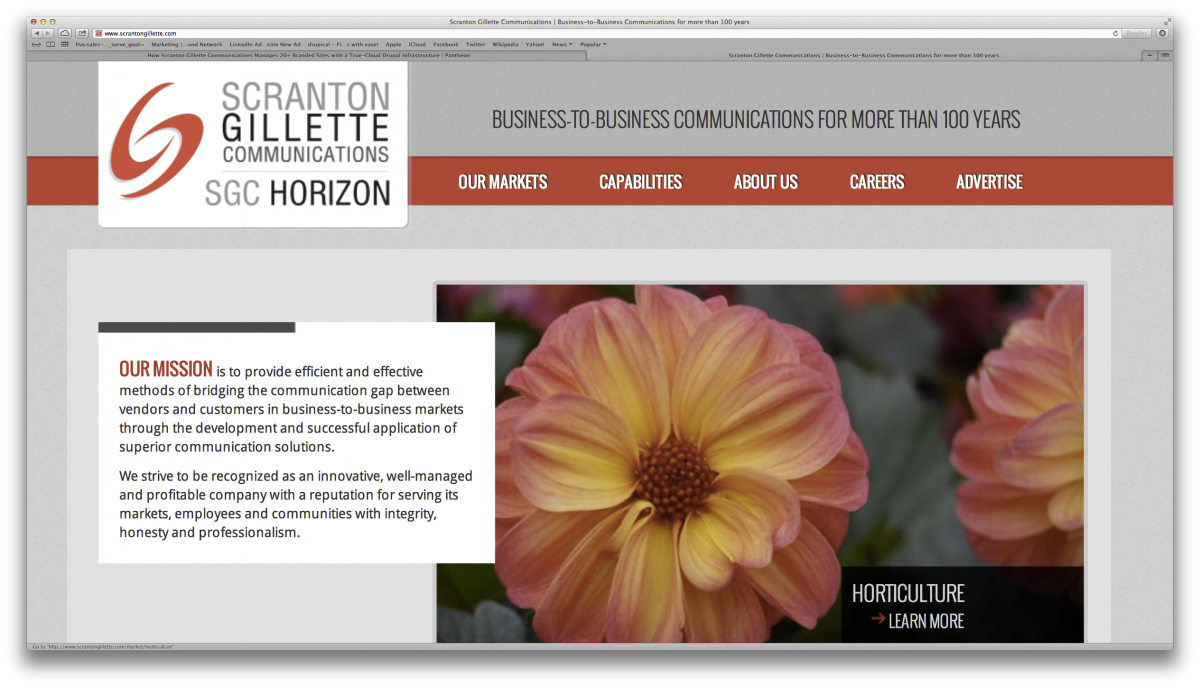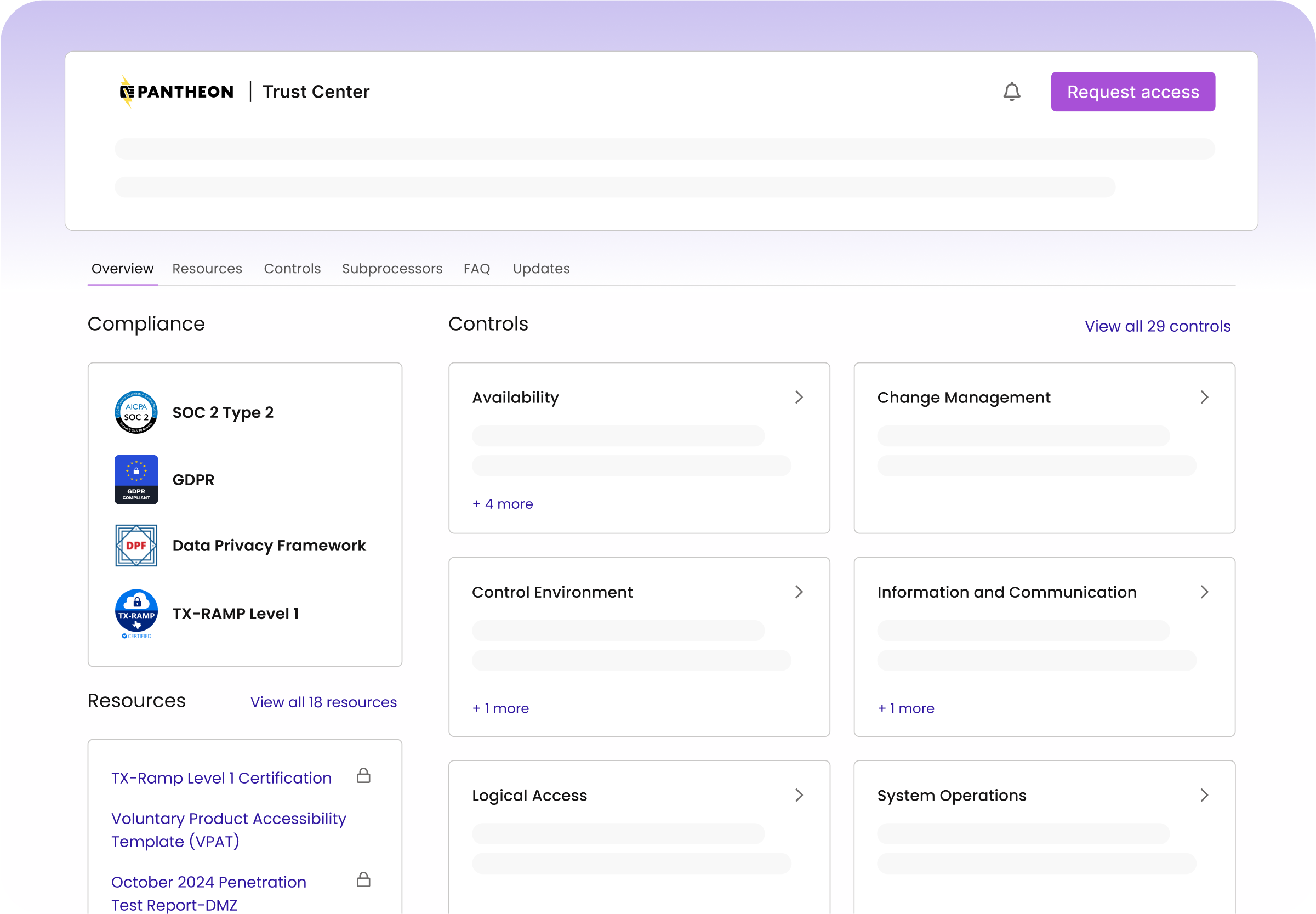How Scranton Gillette Communications manages 20+ Branded Sites with a True-Cloud Drupal Infrastructure and Pantheon
Image

Joel Hughes is SVP of eMedia & Information Technology at Scranton Gillette Communications, a fourth-generation family-owned business-to-business communications company, named by Folio magazine as one of the 40 fastest-growing companies — and an “All Star” in the magazine industry.
B2B PUBLISHING IN THE DIGITAL AGE
Scranton Gillette is a 100-plus-year-old B2B publishing company with about 15 brand publications in 9 vertical markets. Each brand has a website connecting buyers and sellers in the B2B market. We also produce newsletters and print titles. While print continues to be extremely important, the digital side of our business is becoming more important every day.
HOW IT & EDITORIAL PARTNER TO CREATE DIGITAL BLISS
We’re big believers in using internal resources. Our in-house editorial team focuses on really good content, so our IT team—including programming—supports the business. We’re structured in a way that allows us to deliver exceptional digital content:
1. A kind of hybrid super-IT department. Usually you’ll have departments for IT people, programmers, and designers. We have it all under one roof. I’m at the top of all things digital, from company infrastructure—like internal networks, web hosting, and all the web dev—to client websites and infrastructures.
2. A Drupal-friendly editorial department. Because editorial strategy underlies everything we do, the editorial team has a great deal of ownership over our websites. They use Drupal directly every day to enter in all the stories and the content. Marketing also has a hand in strategy, and delivers reader-based and advertising-based promotions.
THE PROBLEM: A CLOUD THAT WASN’T VERY CLOUD.
With 20 websites to manage, we’re always looking for more efficiencies in how we do things. And the way we were doing things wasn’t very efficient. Even though we were using the cloud, it wasn’t true cloud.
Here’s how our old way was inefficient:
1. SCALING WAS HARD, SLOW, & EXPENSIVE. Because all 15 sites shared resources, it was hard to tell how much work each particular service instance was doing. There could be up to 30 minutes of downtime while you upsized the server. You’re waiting for it to unmount the storage device, make the AMI more powerful, and then remount it back on. And then you’ve got to downsize it. So we were paying to scale up, and then to scale back down again. Even though it was “cloud,” the servers themselves were not abstracted. Only the hardware. Pantheon abstracts the servers away, too, because you’re using virtual site instances instead.
2. A FOCUSED POINT OF FAILURE. Each instance could have up to 10 doc roots on it, and we never knew at an instance level where we were with resources. If one instance went down, that’s 7 sites down. We weren’t fully cloud, and didn’t have a clear picture of performance.
On top of that, we also had some very complex support subscriptions.
WHY PANTHEON?
When a friend told me about Pantheon, I decided to start small with a personal website. I just loved the clean interface. Even as a free subscriber, I noticed the support was really good, too. I was getting instant responses to questions. The architecture made sense. But I didn’t want to switch over all 15 sites unless I knew we’d really get the efficiencies. After I brought the dev team in to tinker around with the dev environment, there was buy-in right off the bat. They were really excited once they saw the back end. It wasn’t hard to get everyone on board.
Image

THE OUTCOME (SUCCESS FOR 20+ SITES)
So far, we’ve moved over 20 sites to Pantheon. I believe there are 3 more to come. Here’s what we love about managing all our sites on Pantheon Enterprise:
1. EASY MIGRATION TO PANTHEON. We already had Drupal sites running, so migrating to Pantheon was easy. All we had to do was pull the backups, files, and code.
2. EFFICIENCY FTW! INTERFACE SAVES 5+ HOURS A WEEK. My team is saving at least 5 hours a week total in clicks and wait time, compared to before Pantheon. We love being able to download the files, code, and DB backups with one click on any of the backups. Git comments showing in the interface is great, too. The entire user experience is more efficient. Team communication is higher than it was before. Now we can apply more time to moving the company forward.
3. DEEP-DIVE SUPPORT WHEN IT COUNTS. We recently launched a new website, and were having some performance problems. You think, What could it be? Is it a cache thing? Is it Pantheon? Where’s the issue? After the site went down, I hopped onto the emergency pager. We had multiple guys from Pantheon working on the site immediately. Within an hour, they were able to tell us exactly what was causing the problem. “This view is causing the problem because it’s designed in this exact way. But if you configure it this other way, the query will be written much more efficiently, and the site will work.” I mean, someone took that deep of a dive. I don’t care how slick the interface is, or how many efficiencies are created. At the end of the day, we need to know the team is behind us. And now we’ve got the Batphone.
4. BEST-PRACTICE WORKFLOWS. Being forced into the workflow (e.g. you cannot commit straight to Prod) is great and helps prevent disaster. The ability to very easily spin up websites is great, too. You can get a website running but with a Drupal install in minutes. That’s crazy cool. I could even start a free account for a client and just hand it over to them. “Here’s your website, and by the way, put your credit card in and here’s Pantheon. If you have any trouble, talk to them.” It’s an easy handoff because it’s actually cloud.
5. TRUE CLOUD MAKES IT EASY TO SCALE UP. Everything from support through to the site itself is all one to one. If we need to scale up on Pantheon, they’ll automatically increase our drops.
ADVICE FOR SOMEONE SWITCHING OVER MULTIPLE SITES?
If you want to get your team on board quickly, start with a free instance. Let everyone bang around on it. Once you’re ready to make the switch, don’t do your hardest site first--as tempting as it may be. Give yourself a quick victory early on and do an easy site. Then you can proceed to a medium site and a hard site. At that point, you can call on Pantheon’s Launch Concierge to help you take it live.
Image



